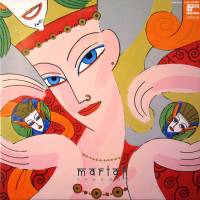When U.S. label Palto Flats reissued Japanese band Mariah's album "Utakata no Hibi" ("Ephemeral Days") in 2015, it wasn't the first time an obscure record from the bubble era had been given new attention. However, the critical praise that followed the release triggered new interest in Japanese artists whose work is a mix of ambient, new age and world music elements.
Haruomi Hosono, formerly of pioneering rock band Happy End, developed an interest in the 1950s "exotica" sounds of American composer Martin Denny, who tried to imagine the music of Asia for middle-class Westerners. Hosono played around with this idea across his "Soy Sauce Music" trilogy of albums in the mid-1970s by exploring music from the Caribbean, North America and Asia, adding his own Japanese perspective to each.
His interest carried over to his subsequent project, Yellow Magic Orchestra, an outfit that subverted Orientalist views of Japan from the get-go via a disco version of Denny's "Firecracker."
Artists such as Mariah embraced global sounds in a less biting way.
"From the end of the 1970s, lots of small record shops started opening up in Tokyo and music from all around the world became relatively easy to obtain," Mariah's Yasuaki Shimizu told Red Bull Music Academy in 2015.
This openness was also reflected in the music of Midori Takada, Water Melon Group and others. They matched rhythms inspired by African music with Tropicalia, alongside flashes of jazz and rock. "Utakata no Hibi" is a fitting highlight from this period: a progressive melding of sounds that imagined a borderless world.

















With your current subscription plan you can comment on stories. However, before writing your first comment, please create a display name in the Profile section of your subscriber account page.